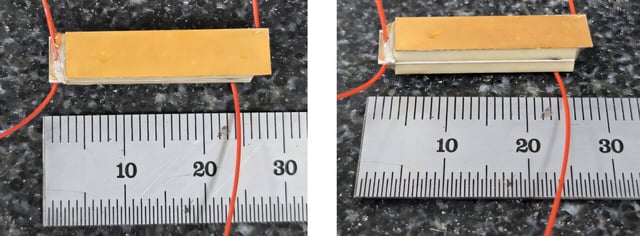Overview
- The sandwich-structured device stacks two piezoelectric layers to harvest both incoming and residual ultrasound, boosting energy conversion by over 20%.
- In water tests at a 30 mm distance, it achieved 497.47 mW/cm² power density and 732.27 mW output, fully charging a 140 mAh battery in 1 h 40 min.
- Under 30 mm-thick pig tissue, the harvester delivered enough power to recharge a 60 mAh battery in 1 h 20 min, simulating realistic implantation conditions.
- Peer-reviewed in Biosensors and Bioelectronics, the findings outpace prior ultrasound charging systems by at least twofold in power output.
- If commercialized, the technology could eliminate repeated implant battery-replacement surgeries by enabling noninvasive wireless recharging below 60 minutes.

